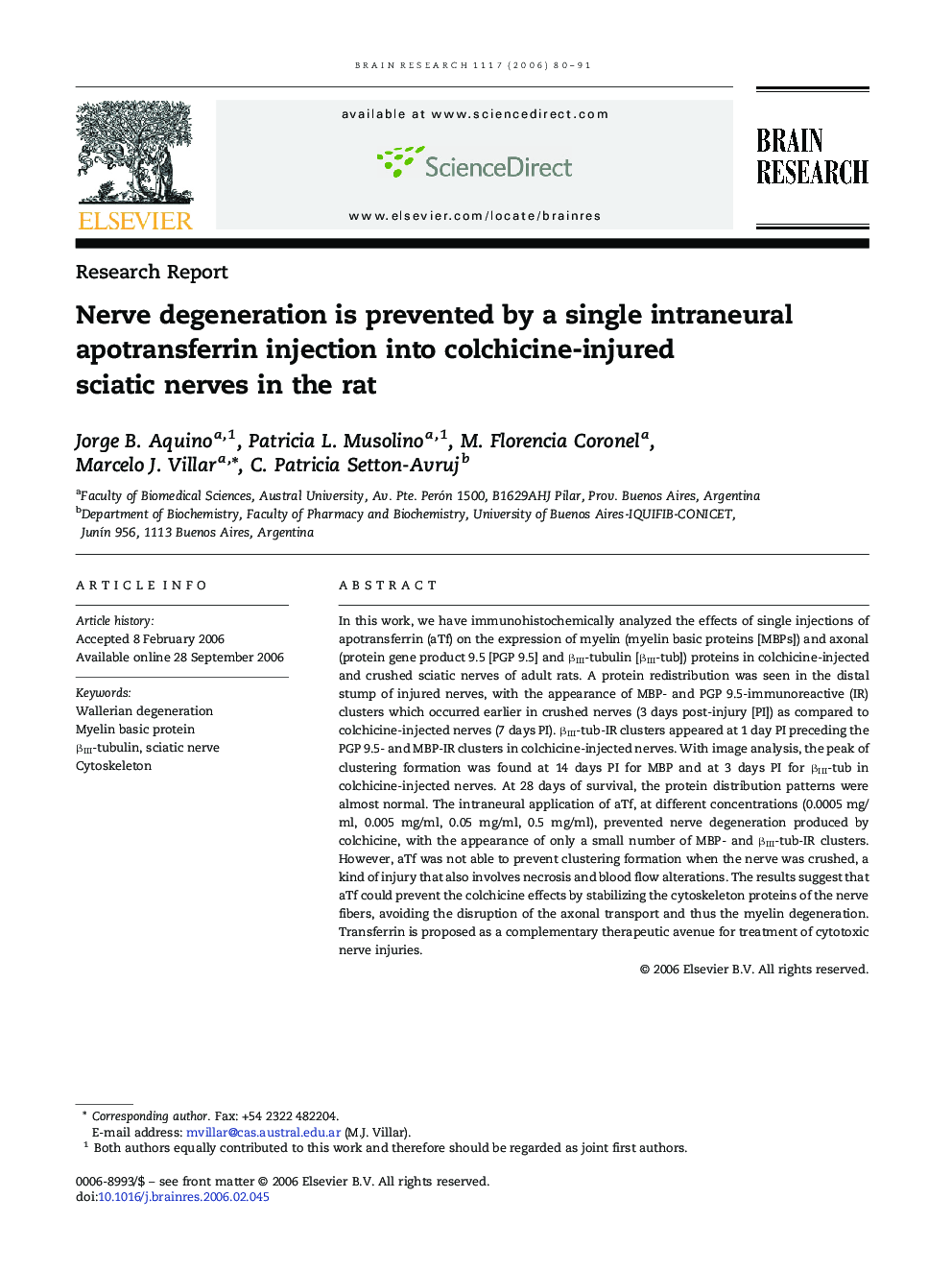| Article ID | Journal | Published Year | Pages | File Type |
|---|---|---|---|---|
| 4332167 | Brain Research | 2006 | 12 Pages |
In this work, we have immunohistochemically analyzed the effects of single injections of apotransferrin (aTf) on the expression of myelin (myelin basic proteins [MBPs]) and axonal (protein gene product 9.5 [PGP 9.5] and βIII-tubulin [βIII-tub]) proteins in colchicine-injected and crushed sciatic nerves of adult rats. A protein redistribution was seen in the distal stump of injured nerves, with the appearance of MBP- and PGP 9.5-immunoreactive (IR) clusters which occurred earlier in crushed nerves (3 days post-injury [PI]) as compared to colchicine-injected nerves (7 days PI). βIII-tub-IR clusters appeared at 1 day PI preceding the PGP 9.5- and MBP-IR clusters in colchicine-injected nerves. With image analysis, the peak of clustering formation was found at 14 days PI for MBP and at 3 days PI for βIII-tub in colchicine-injected nerves. At 28 days of survival, the protein distribution patterns were almost normal. The intraneural application of aTf, at different concentrations (0.0005 mg/ml, 0.005 mg/ml, 0.05 mg/ml, 0.5 mg/ml), prevented nerve degeneration produced by colchicine, with the appearance of only a small number of MBP- and βIII-tub-IR clusters. However, aTf was not able to prevent clustering formation when the nerve was crushed, a kind of injury that also involves necrosis and blood flow alterations. The results suggest that aTf could prevent the colchicine effects by stabilizing the cytoskeleton proteins of the nerve fibers, avoiding the disruption of the axonal transport and thus the myelin degeneration. Transferrin is proposed as a complementary therapeutic avenue for treatment of cytotoxic nerve injuries.
